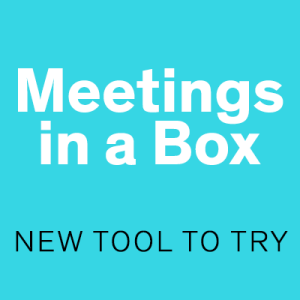
BY: JENNIFER ROOK
These last two years have had a major impact on events. Will 2022 be more of the same? Lansing’s leading event planner, Ashlee Willis, shares what’s new and offers tips on event planning in future.
Many industries have been impacted by the pandemic, in particular, tradeshows and meetings, which raises the question: Will things ever be the same again? After two years of mandates, travel restrictions, social distancing, vaccine requirements, and existing virtually, live events an on the upswing with industry experts projecting a full recovery by 2023. And there is data to supports these findings. According to the Global Recovery Insight 2021 report, 72% of survey participants plan to attend in-person events and shows in 2022. This is good news on a national level, but what in Michigan? If you’re considering launching an event in 2022, what’s the likelihood that your fellow Michiganders will show up?
We sat down with Ashlee Willis, CEO and Founder of Michigan Premier Events, a full-service, award-winning, corporate and government event management company based in Lansing and asked her to recap critical lessons learned and to get her take on the new rules of event planning.
Lessons learned
“When everything switched from live to virtual events, we asked ourselves, ‘What are the needs of the attendees?’” said Willis. “This became vital because everyone suffered early on from their fair share of Zoom fatigue.” Willis said that it became apparent that people wanted to get back to being in-person, even with restrictions, because the interactions and camaraderie just couldn’t be replicated on a screen. Yet, there were plenty of people who didn’t feel safe enough to attend an event in person. So, Willis and her team got creative and tried new tactics like hosting events outside and hybrid events.
The beauty of hybrid
“As much as people wanted to resume in-person meetings, the virus dictated otherwise,” said Willis. “Applying a hybrid model of live and virtual and paying equal attention to the experience of both enabled us to provide a rich experience that appealed to everyone whether they were in person or not.” Willis added, “The beauty of a hybrid event is that you save money — both from an attendee side and from a planning perspective. Speaker fees were lower too, due to no travel costs.”
Willis also noted that virtual events were prime for digital advertising opportunities due to having a captive audience. “Banners and flyers have a greater chance of being ignored at a live event because there’s so many things competing for your attention,” said Willis. “We found that digital ads were getting more attention on virtual events due the fact that the screen offers a limited experience.”
Greater involvement
If there was a main takeaway that would summarize events over the past 18 months, Willis says that today’s attendees want to be part of the event, not simply subject to it. “Attendees’ expectations changed, they want events done with them and not just to them,” said Willis. “A TV-show approach is not enough. If it was, you could just send everyone a recording and let them watch it, knowing that most would watch faster and skip to the good bits.”
Willis also said that the pandemic gave way to the rise of hosting smaller, more micro events. “People were more comfortable in a smaller setting versus being in a large group. We saw a lot more one-on-one events,” said Willis.
NEW RULES FOR EVENT PLANNING
1. Ask, who are you trying to attract?
Get specific. Define who your ideal attendee is and why they should attend your event. And ask the hard questions. If you find that your answers are too vague, it impacts the quality of your event. You can’t be everything to everyone.
2. Keep your topic relevant.
Your event will fail if your audience isn’t engaged. When hosting a virtual event, it’s critical to be relevant. You need to do everything you can to facilitate a two-way dialogue. Look at the topic from the audience perspective and recognize what’s in it for them.
3. Storytelling is key.
A good story is memorable and flows seamlessly. When you tell a good story, it keeps the audience engaged. This includes reviewing your content, your speaker list, and the flow of your event. Are the components of a good story playing out in each aspect of your event?
4. Track your data.
Track the data and review it. Better data leads to better events. Plus, data enables you to track spending, identify overages and gaps, and helps you understand how to create a better event budget. Are your tickets overpriced? Did your speakers add value to your event? Would attendees recommend your event over others? The devil is in the data.
5. Get your tech right!
If you are going to invest in anything, make sure to budget your technical needs correctly. Make sure you test your technical connections ahead of time and hold virtual rehearsals to ensure everything is working seamlessly.
6. Try something new.
Michigan is unique because we experience all four seasons. Take advantage of these seasonal changes. Acknowledging the weather in the scheme of your event adds a level of “hyper-locality” that can add creativity and enhance the overall event experience for your attendees.
__________________________________________________________
 Meetings in a Box is a public engagement technique designed for community groups, associations, or friends to gather at a convenient time and location to share their opinions about a plan or project in their community. Participants are given a kit that contains everything needed to hold a meaningful discussion. Included are instruction sheets for the facilitator, discussion questions, worksheets for participant responses, feedback questionnaires, and directions for recording and returning responses.
Meetings in a Box is a public engagement technique designed for community groups, associations, or friends to gather at a convenient time and location to share their opinions about a plan or project in their community. Participants are given a kit that contains everything needed to hold a meaningful discussion. Included are instruction sheets for the facilitator, discussion questions, worksheets for participant responses, feedback questionnaires, and directions for recording and returning responses.
These kits can be completely paper-based, downloadable, and posted on a project or agency website for any interested individual or organization to use. Kits may also include other meeting materials such as project posters, post-its, stickers, and other engagement materials relevant to the specific meeting design of the kit. For more information, go to njtpa.org.

